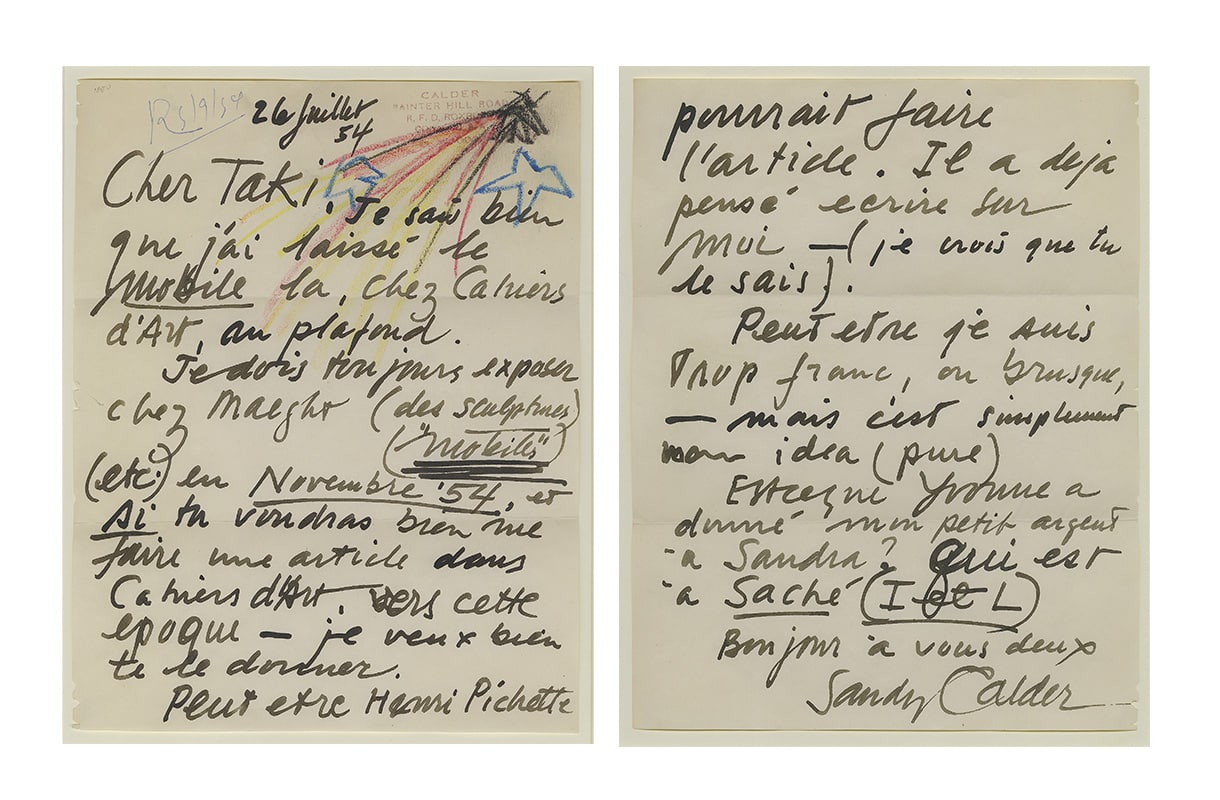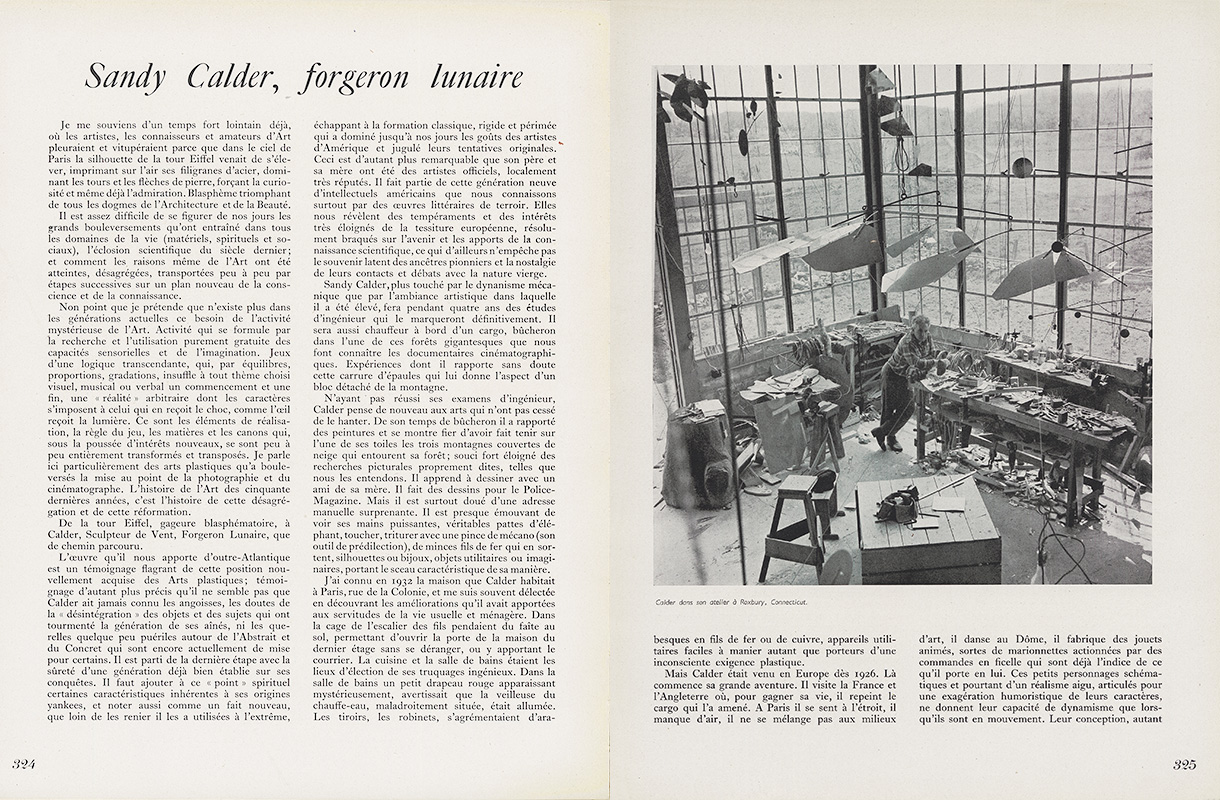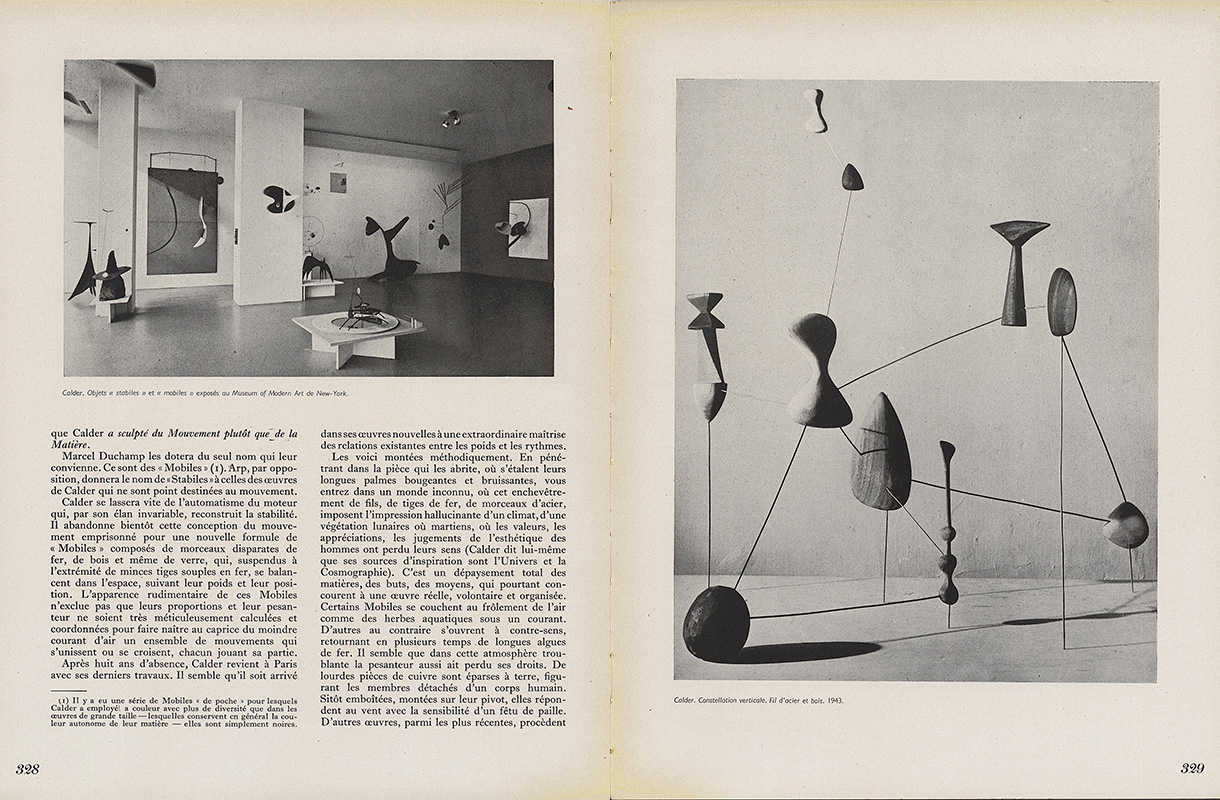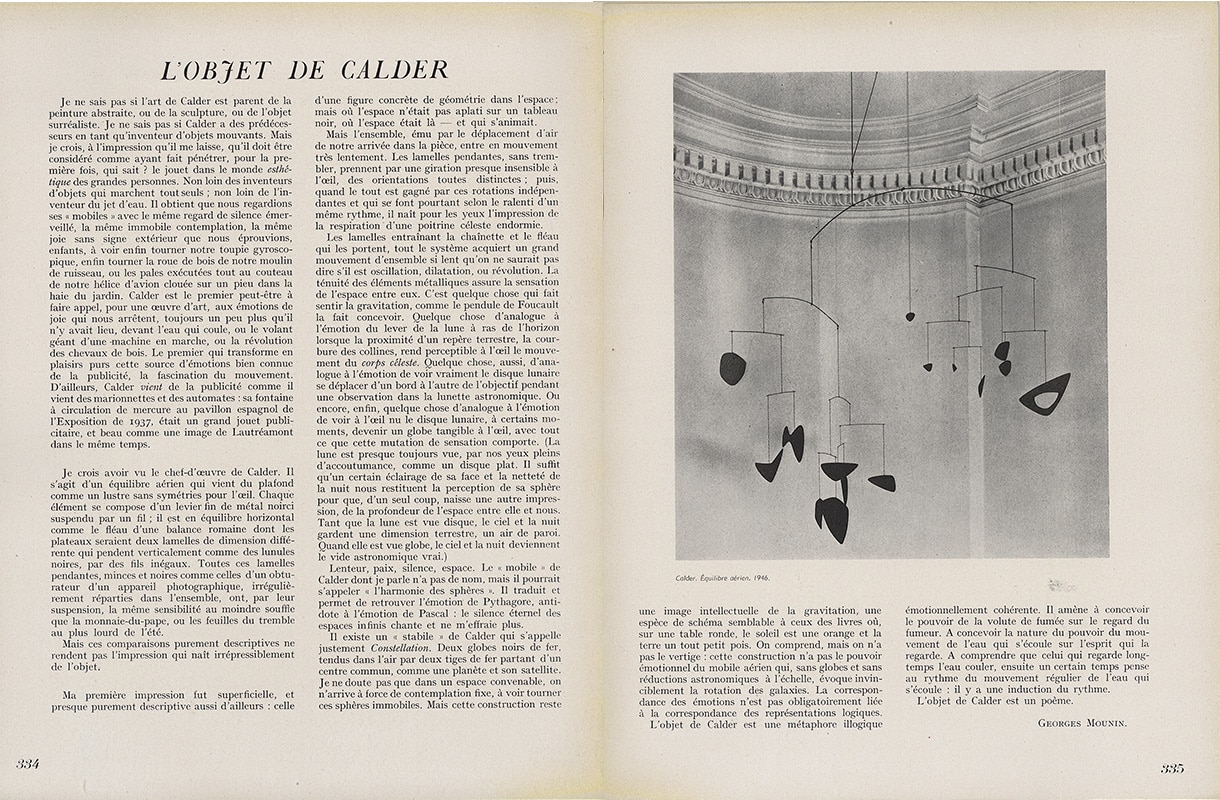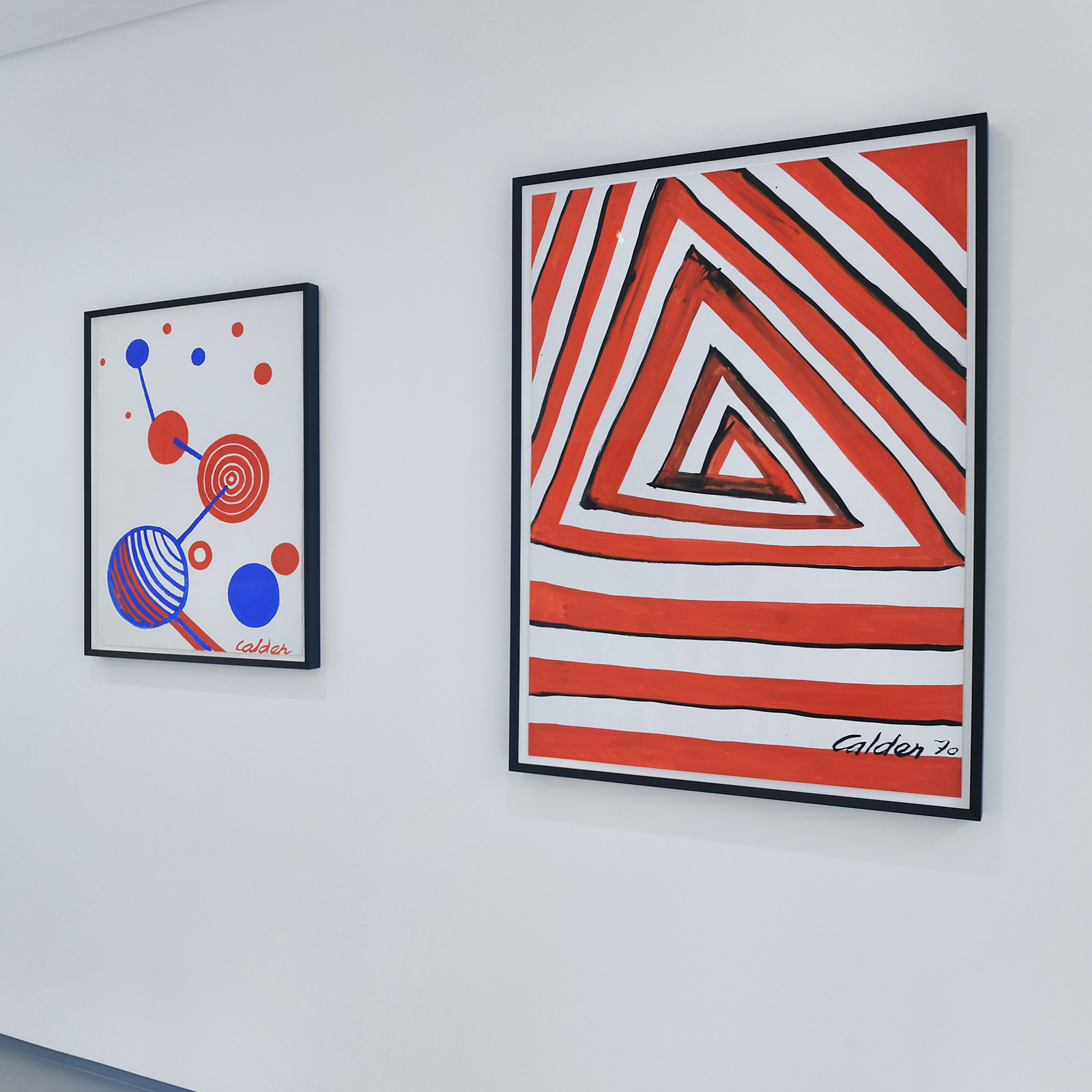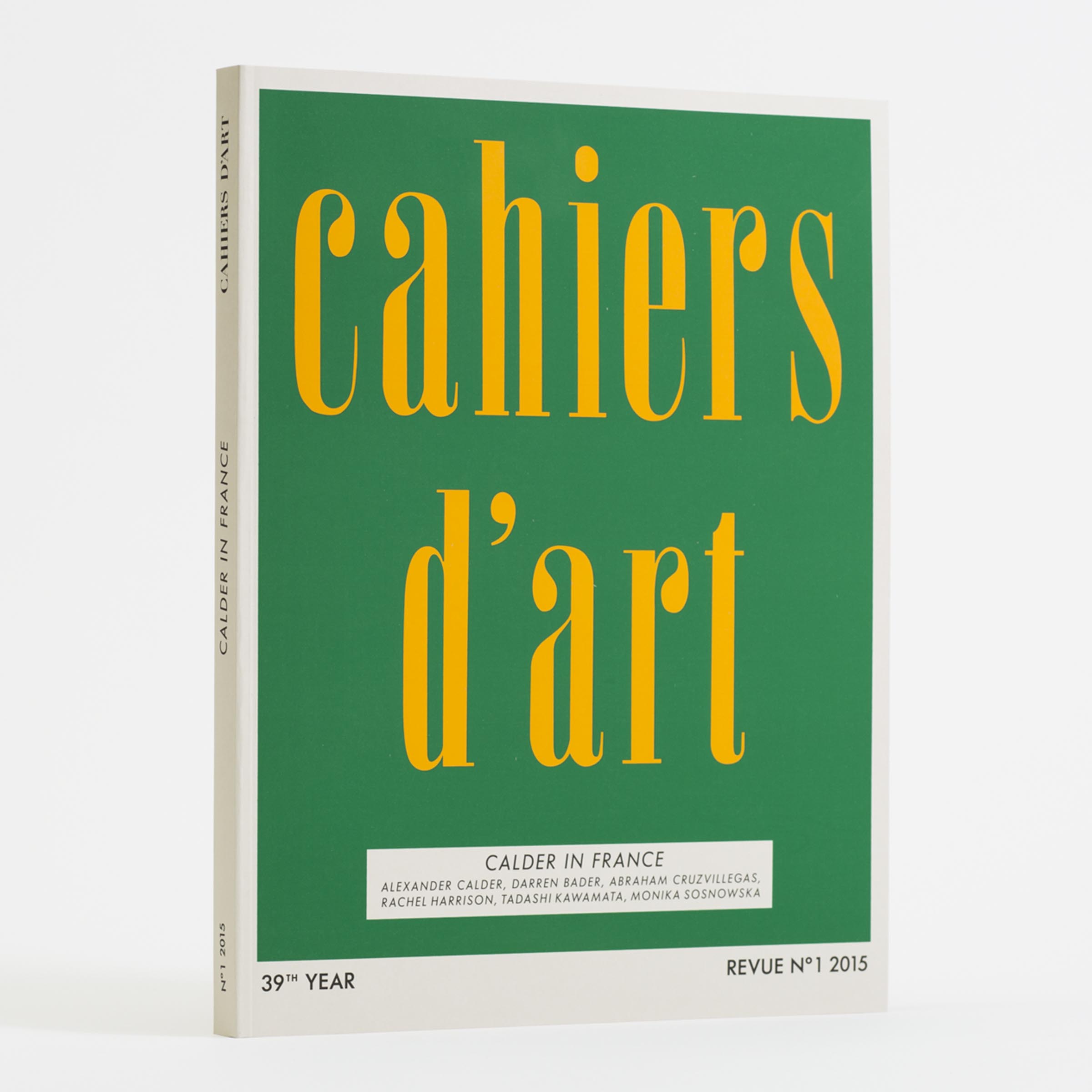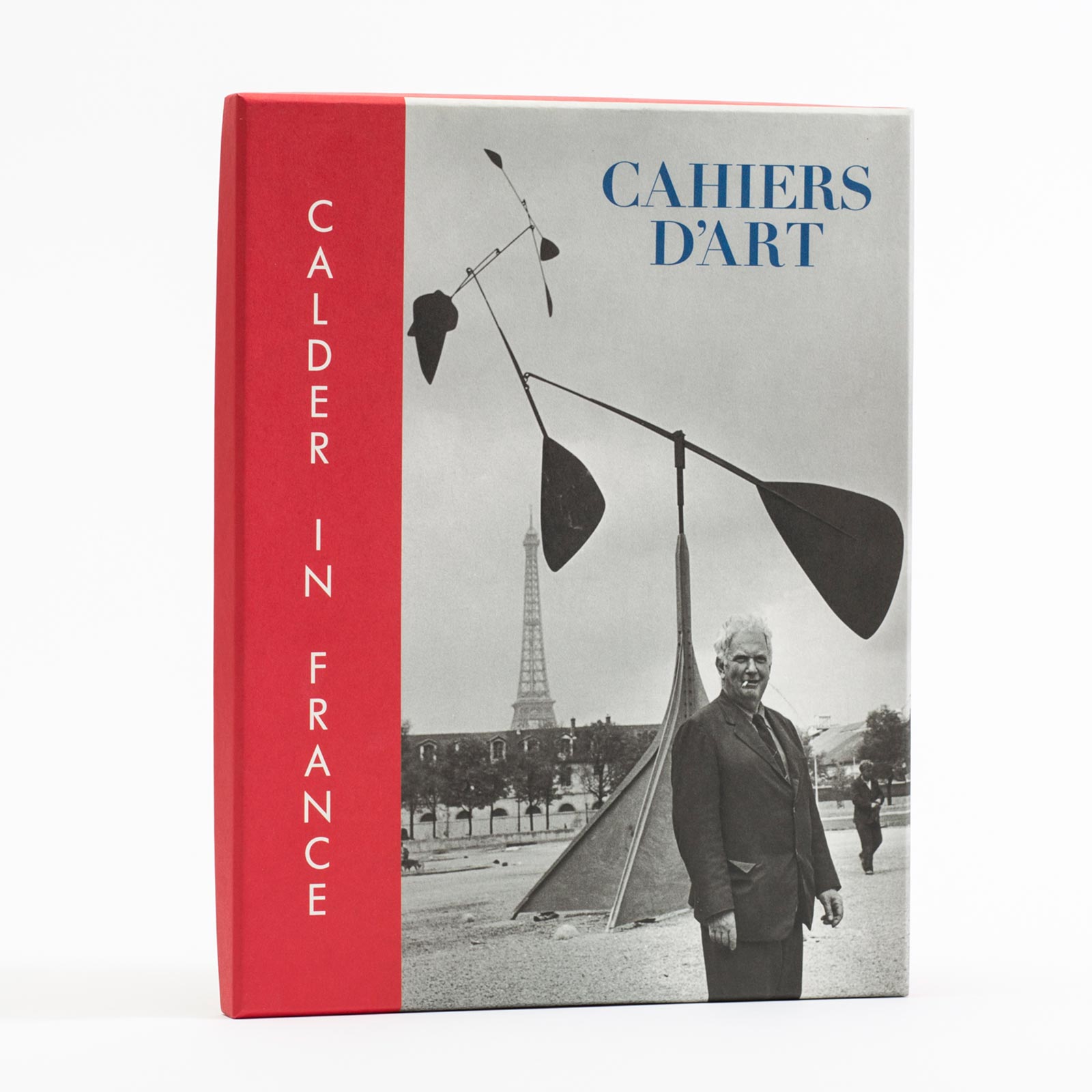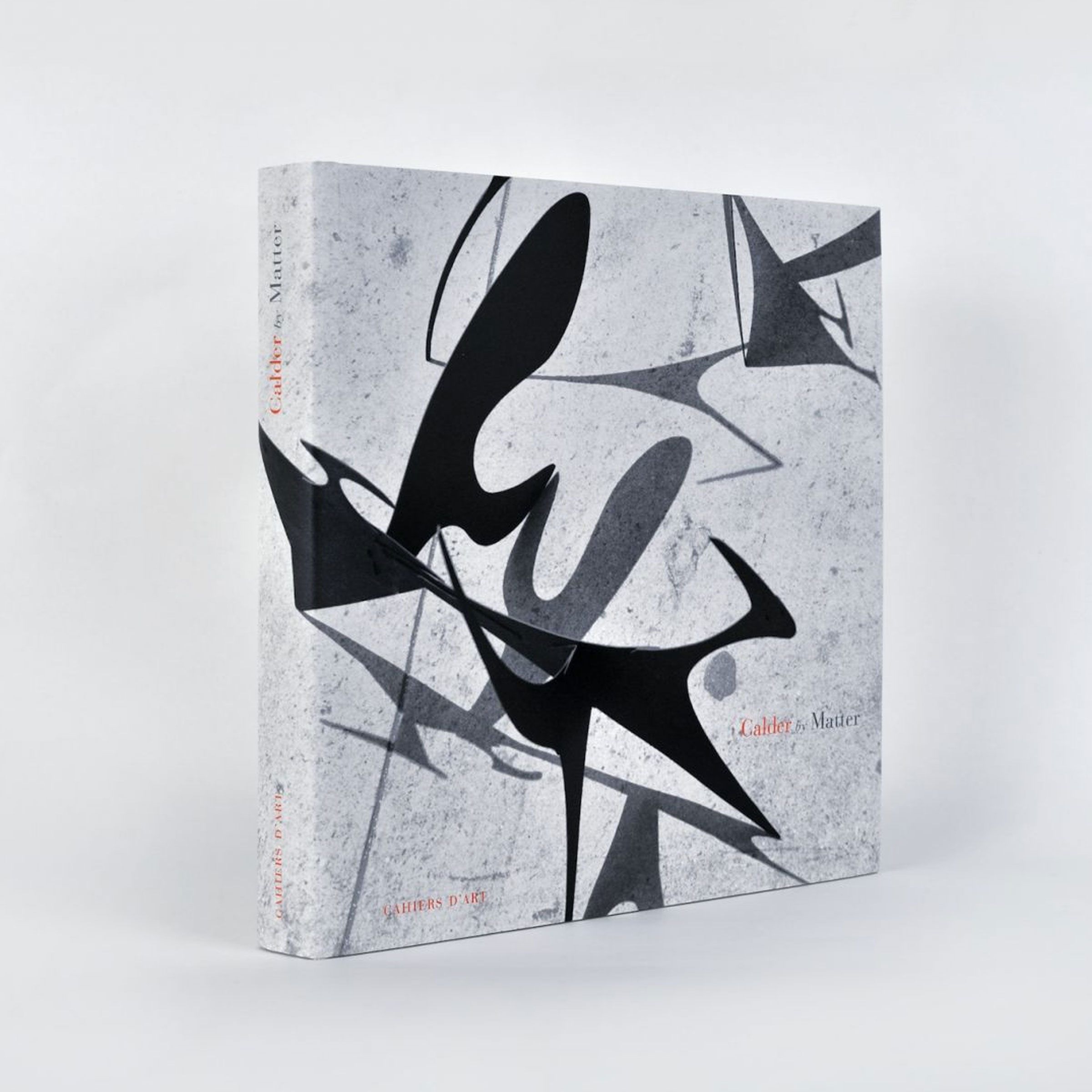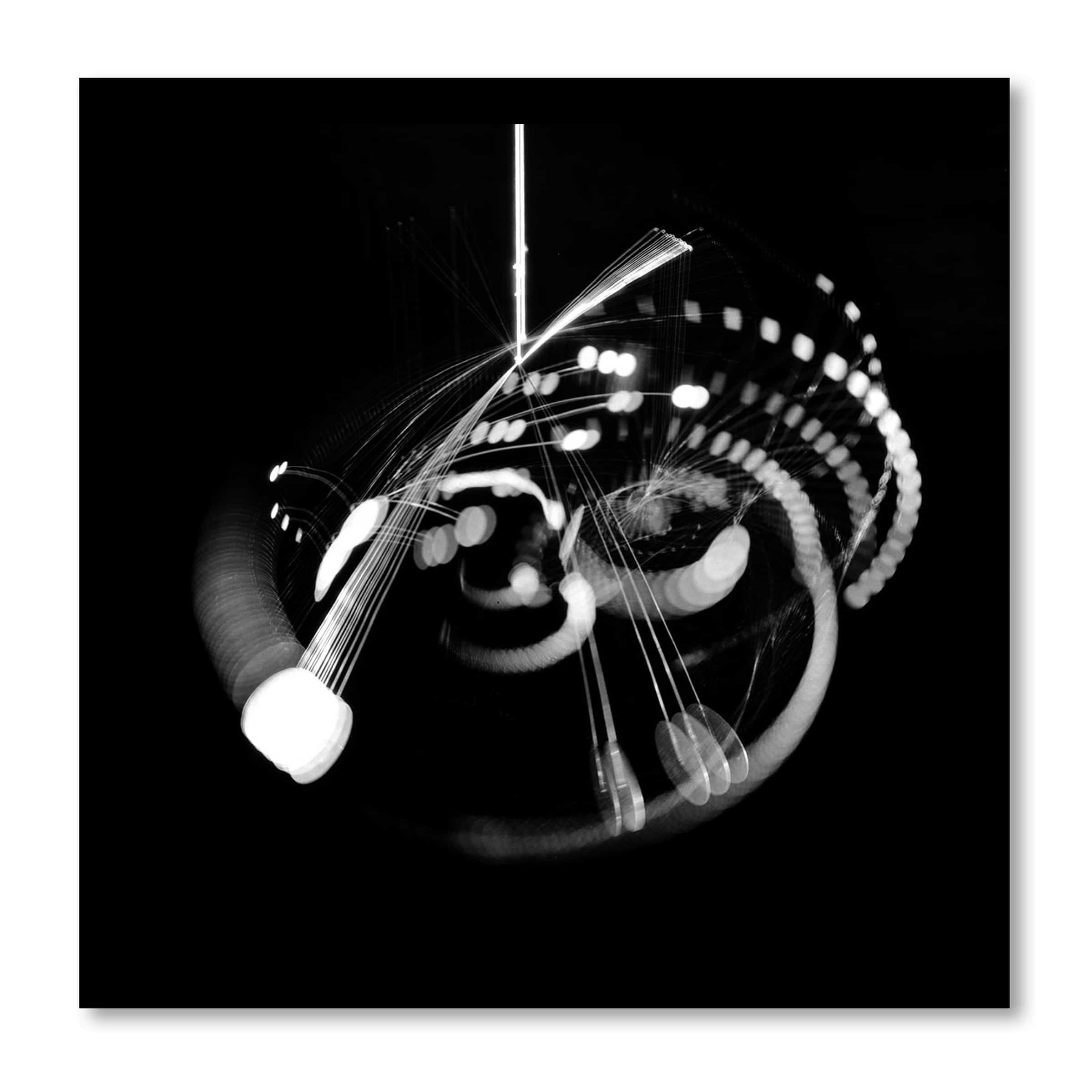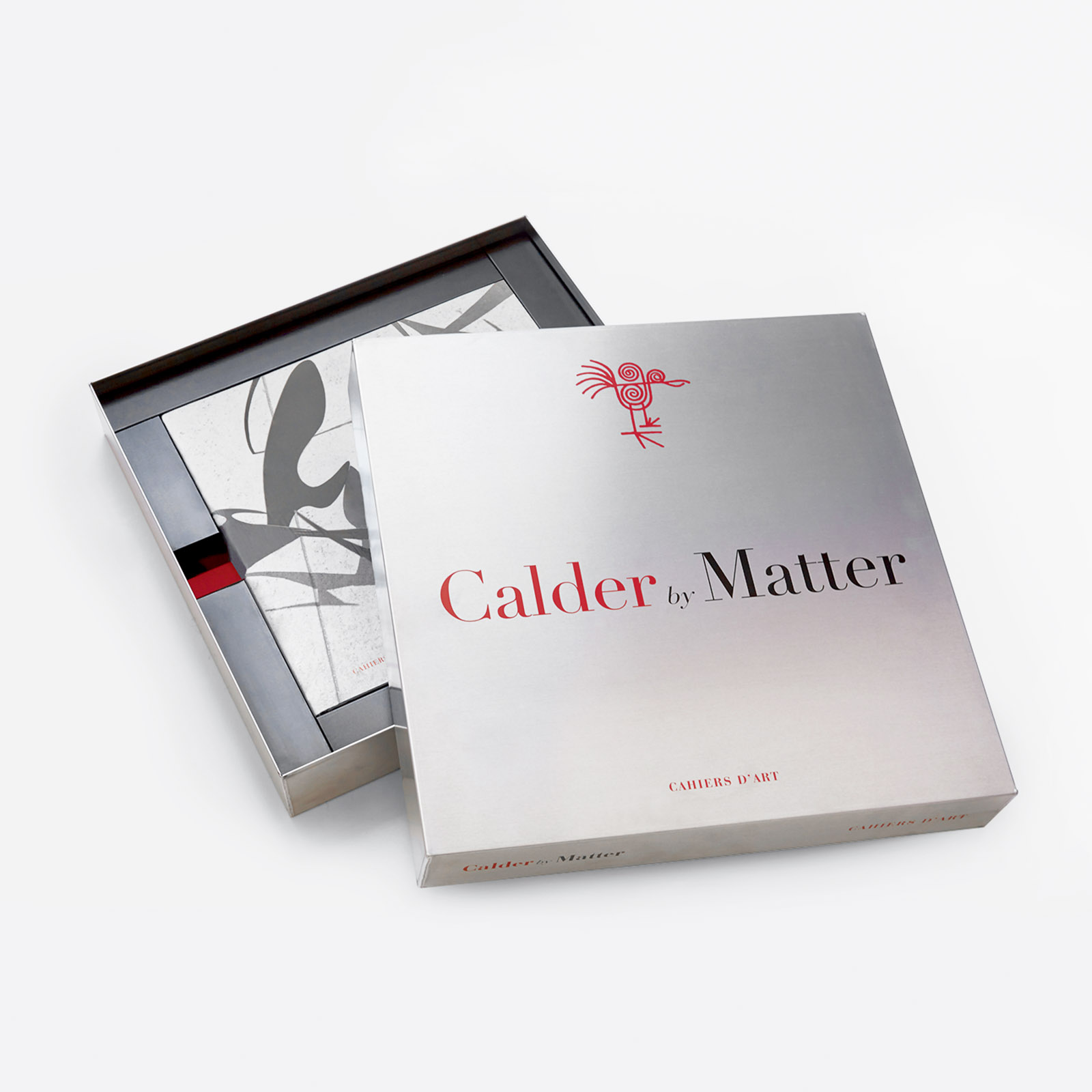Alexander Calder
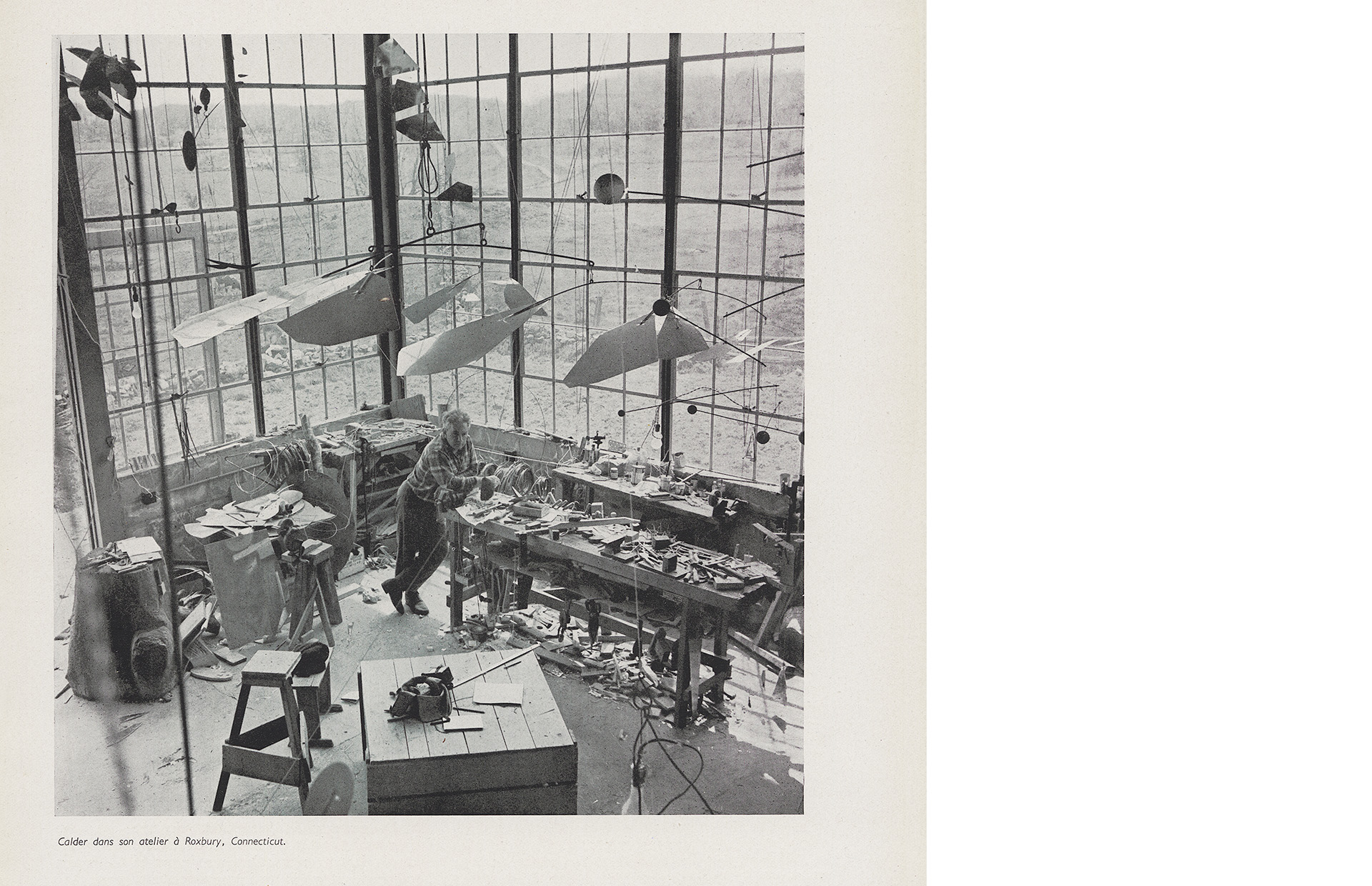
Christian Zervos supported Alexander Calder’s work in numerous articles in Cahiers d’art. He met the artist during a stay in Paris in the early 1930s. Zervos first published a general article on Calder in Cahiers d’Art 1933, no. 5-7 written by A. Jakoski.
However, it was only after 1937 and the fountain created for the Spanish Republican Pavilion, that Zervos recognized Calder as an important artist. In 1939, he published an eloquent article about Calder’s mobiles, “Mobiles en movement” (Cahiers d’Art 1939, no. 1-4), followed by Georges Buffet’s richly illustrated article “Sandy Calder, forgeron lunaire” (Cahiers d’Art 1945-1946).
An exhibition at Cahiers d’Art gallery was devoted to Calder in 1954, in which a mobile was suspended from the gallery ceiling. This mobile would hang there until Christian Zervos’s death, becoming part of the gallery’s identity. The artist and the publisher maintained a friendly correspondence throughout their life with Alexander Calder addressing Christian Zervos as “Taki”.
To follow the spirit of Cahiers d’Art and the friendship of Zervos with Calder, Staffan Arhenberg organized a show dedicated to the sculptor in 2013 and published a monograph called Calder by Matter, in direct collaboration with the Calder Foundation, which presented a new perspective on Calder’s oeuvre, life, and creative process.
In 2015, to commemorate the 25th anniversary of the Atelier Calder in France, the residency at Calder’s former studio in Saché, Cahiers d’Art published a special issue on Calder in France. It includes historical essays and numerous previously unpublished photographs pertaining to Calder’s time in France, the design and construction of his Saché studio, an essay by Alfred Pacquement (President of the Board of the Atelier Calder) on the artists who have been in residency over the past 25 years and pictures by Agnès Varda. An original copper plate was etched by Calder in 1942 but no edition was printed during his lifetime. This Untitled etching is presented for the first time in this issue of Cahiers d’Art.
“Slowness, peace, silence, space. The Calder mobile I’m talking about doesn’t have a name, but it could be called “Harmony of the Spheres.”
Georges Mounin “L’objet Calder” Cahiers d’Art 1945-1946, p. 334-335
Alexander Calder (1898–1976) was an American sculptor best known for his abstract mobiles and monumental public sculptures. Versatile and innovative, he also created paintings and prints, wire sculptures, rugs, tapestries, toys and jewelry. Originally trained as an engineer, Calder moved to Paris in 1926 where he became part of the Parisian avant-garde, spending time in the company of artists such as Duchamp and Miró. It was in Paris that he created the Cirque Calder, and began experimenting with three-dimensional works in space. He returned to America in 1933; the first retrospective of his work was presented in 1938 at the George Walter Vincent Smith Gallery in Springfield, Massachusetts. A second major retrospective was exhibited at the Museum of Modern Art in New in 1943. In 1953, Calder returned to Saché, France, where he built a large studio in 1962. In 1987 Calder’s family established the Calder Foundation in New York, directed by Alexander S.C. Rower, and in 1989, the Calder Estate and the Centre National des Arts Plastiques established the Association pour l’animation de l’Atelier Calder as an artist-in-residence program.
In 1998 Calder was honored by the US Postal Service with a set of 5 first-class stamps. His monumental Floating Clouds in Caracas, Venezuela, is a UNESCO World Heritage site.
The Whitney Museum in New York has the largest collection of work by Alexander Calder and his work is included in the collections of the Guggenheim Museum and the Museum of Modern Art in New York, the Pompidou Centre in Paris and the Reina Sofia in Madrid, among many others worldwide.

